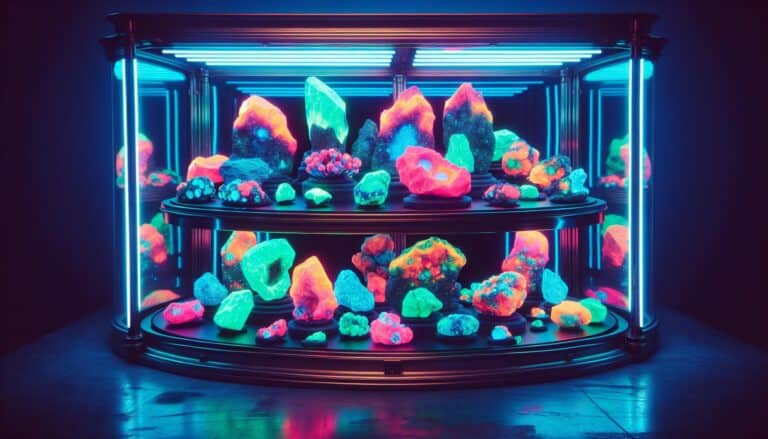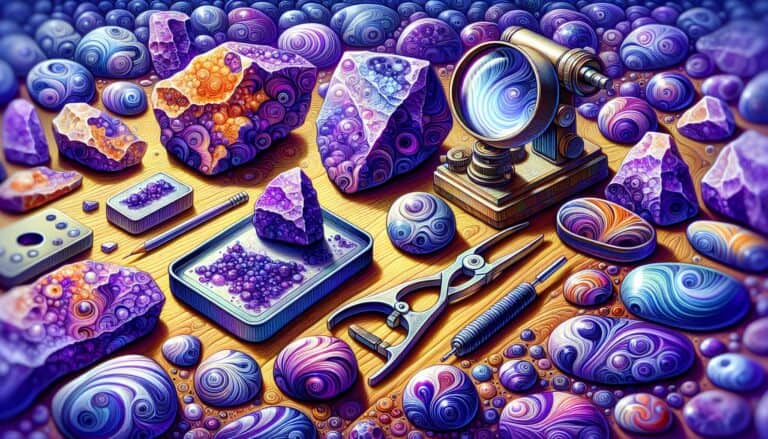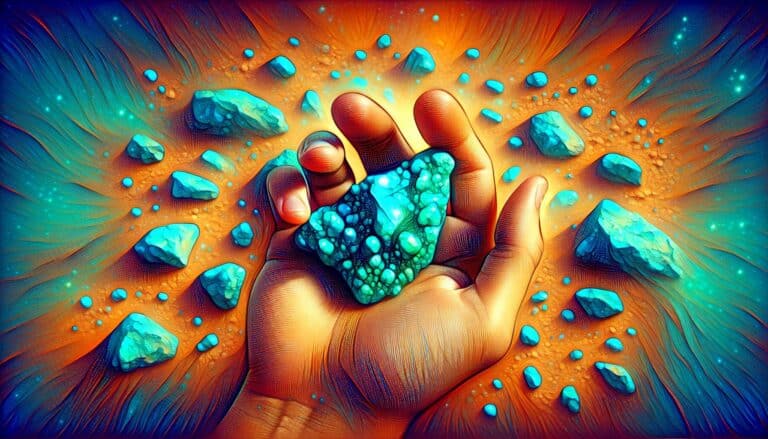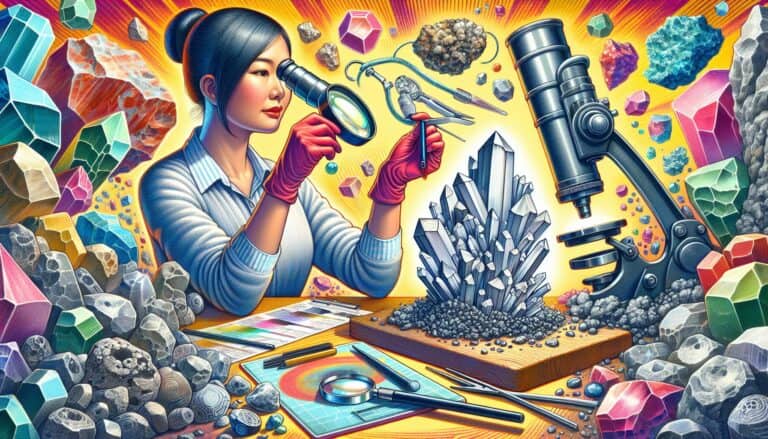Discovering the gleaming allure of topaz in its natural form can be thrilling.
You’re about to learn how to discern this precious gemstone from look-alikes with ease. Whether you’re a budding gemologist or simply a jewelry enthusiast, knowing how to identify topaz is a skill that’ll pay off.
Topaz boasts unique characteristics that set it apart from other minerals. You’ll find out how its hardness, crystal structure, and refractive properties are key indicators.
Get ready to become a topaz-spotting pro as we dive into the fascinating world of gem identification.
To identify topaz, check its characteristic color range, perform a white streak test, and use a magnet for non-magnetic confirmation. Topaz ranks 8 on Mohs scale, shows birefringence, and is transparent to translucent. It has a refractive index of 1.609-1.643 and specific gravity between 3.4-3.6.
How to Identify Topaz Through Testing
When you’re looking to identify topaz, several tests can help. While appearance alone may lead to an educated guess, it’s the scientific tests that provide you with definitive answers.
Visual Inspection
Start by examining the gem’s color and clarity. Topaz is renowned for its vibrant hues which can range from yellow, pink, and orange, to blue and clear. Look for the hallmark elongated crystal form and the gem’s signature pleochroism, where it shows different colors or depths of color when viewed from different angles.
The Streak Test
Drag the stone across a piece of unglazed porcelain. The color of the streak left by topaz should be white, which helps differentiate it from other similar minerals whose streak may be a different color. Always conduct this test with caution to avoid damaging the gemstone.
Magnet Test
While topaz is not magnetic, this quick test can help rule out some imitators that might respond to a magnet. If the stone sticks to the magnet, it’s a clear sign that the gem is not a topaz.
Hardness Test
Topaz ranks 8 on the Mohs hardness scale. If you’re doing an informal test, try scratching glass with the gem. Since glass has a Mohs hardness of around 5, true topaz should scratch it easily.
Birefringence Test
Birefringence refers to a gemstone’s ability to refract light in two different paths. You’ll need a polariscope to observe this feature. Place your gemstone between two polarizing filters and rotate it – if it’s topaz, you should see a doubling of the back facets or edges within the stone.
Checking The Diaphaneity
Observe whether your gemstone allows light to pass through it or not. Topaz is transparent to translucent. If your specimen is opaque, it’s likely not topaz.
Single or Double Refraction
Using a refractometer, you can check if the stone is singly or doubly refractive. Topaz is doubly refractive, which means, as light passes through, it splits into two beams. If you observe only one refraction, the stone might not be topaz.
Refractive Index Test
The refractive index indicates how much a gemstone bends light. Topaz’s refractive index ranges from 1.609 to 1.643. Your jeweler’s refractometer can easily determine this value for you.
Finding The Specific Gravity
Specific gravity measures the density of your gemstone as compared to water. For topaz, this figure lies between 3.4 to 3.6. A hydrostatic balance or electronic scale can help determine this.
Identifying Topaz in the Field
When searching for topaz in natural settings, look for signs typical of topaz deposit areas, such as rhyolites and pegmatites. Keep an eye out for its prismatic crystals and remember that topaz often forms near the surface, so it may have been subjected to weathering, which can affect its appearance.
Recognizing Potential Topaz Rocks
If you come across a candidate rock, check for the typical cleavage that topaz displays: a perfect basal cleavage that results in distinct and straight cleavage planes. This characteristic, combined with its hardness and crystal shape, can be a strong indicator that you’ve found topaz.
Physical Characteristics of Topaz
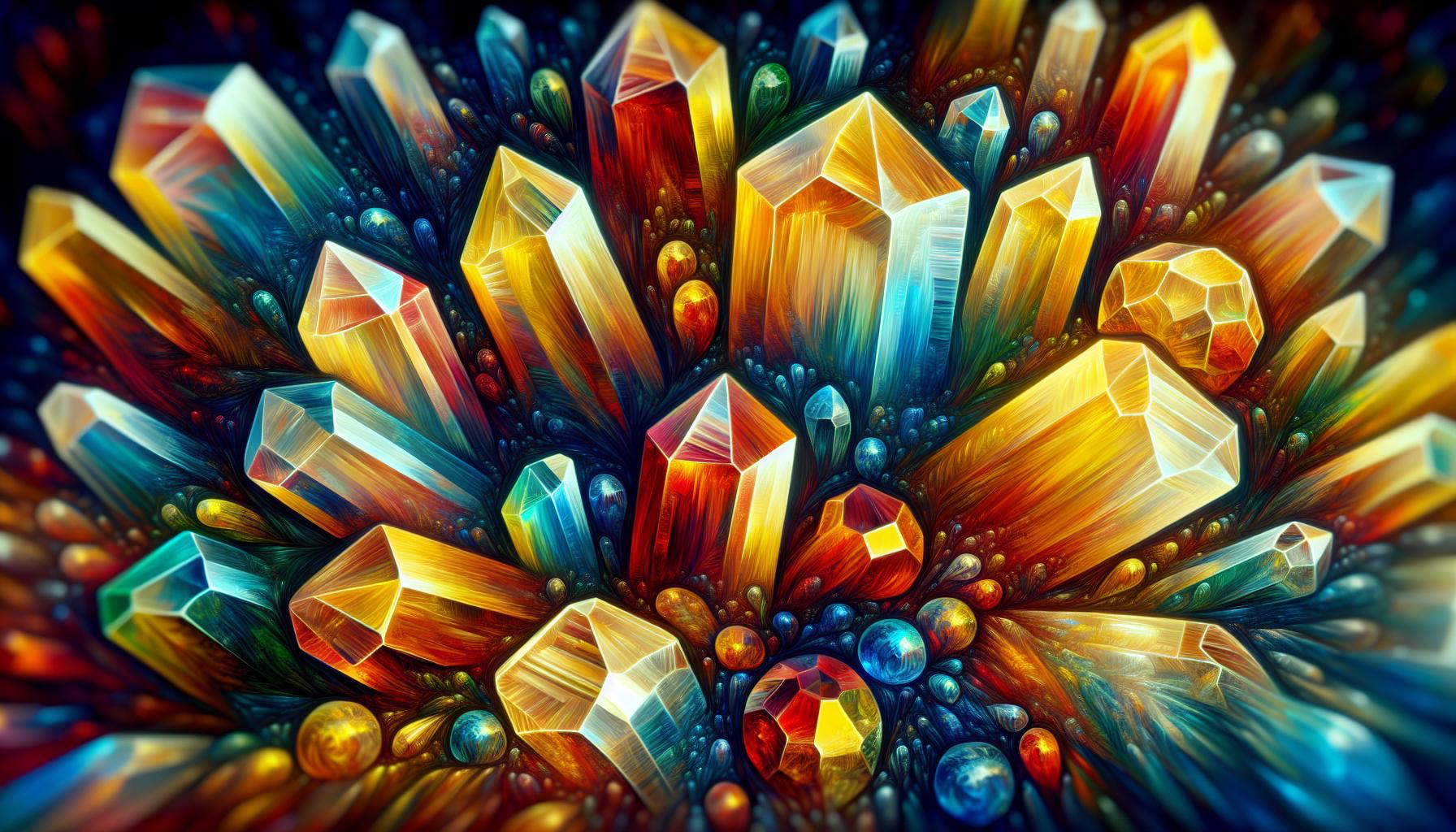
Understanding the physical characteristics of topaz is essential when differentiating it from other minerals. Topaz crystallizes in the orthorhombic system and typically forms prismatic crystals with striations parallel to the long axis. These crystals may display a variety of colors including colorless, yellow, orange, red, blue, and green. The intensity and type of color topaz has can depend on the presence of trace elements or impurities within it.
One notable characteristic of topaz is its hardness. It has a Mohs scale rating of 8, making it quite resilient and scratch-resistant. This property is frequently tested with a hardness kit to confirm the mineral’s identity. To complement hardness, topaz’s cleavage is perfect in one direction, which means it can split along a specific plain due to its atomic structure.
| Property | Description |
|---|---|
| Crystal System | Orthorhombic |
| Hardness | 8 on the Mohs scale |
| Cleavage | Perfect in one direction |
| Color Varieties | Colorless, yellow, orange, red, blue, green |
In addition to its hardness and cleavage, topaz is often noted for its high specific gravity, which ranges from 3.4 to 3.6. This gives it a notably heavier feel compared to other minerals of the same size. Furthermore, topaz exhibits a vitreous luster, giving it a glassy appearance that enhances its appeal as a gemstone.
Light plays a unique role in the appearance of topaz due to its pleochroic nature, showing different colors when viewed from different angles. This, coupled with its transparent to translucent diaphaneity, can help you distinguish it from similar-looking stones.
When examining topaz in the wild, pay attention to its distinct features outlined above and use the properties table as a quick reference guide.
How Are Topaz Formed?
Topaz crystals form through a process called “flux growth” in which minerals crystallize from a high-temperature fluid rich in various elements. These fluids, often containing fluorine—the main element responsible for topaz’s formation—permeate through rocks in the Earth’s crust.
Your journey to identify topaz begins with understanding its birthplace. Typically, you’ll find topaz within granite and rhyolite deposits as well as in volcanic cavities and pegmatites, the coarse-grained igneous rocks known for containing large crystals. Fluids within these rock formations cool down over time, allowing topaz to crystallize.
The ideal conditions for topaz formation involve high temperatures and the presence of water and fluorine. As these components combine, they lead to the crystallization of topaz. This process can occur over millions of years, resulting in the gemstone’s characteristic prismatic crystals.
| Element | Importance for Topaz Formation |
|---|---|
| Fluorine | Primary element in crystallization |
| High Temp. | Facilitates crystal growth |
| Water Presence | Required for mineral transport |
In regions known for high geological activity, such as mountain ranges or areas with past volcanic activity, you’re more likely to encounter topaz. Keep an eye out for its distinctive characteristics and remember that these gems are formed under conditions most cannot withstand—a testament to topaz’s resilience and beauty.
Preparation for Topaz Hunting
Gathering the Right Tools
Before you embark on your topaz hunting adventure, it’s essential to be equipped with the right tools. Opt for a sturdy hammer and chisel to carefully extract the crystals without damaging them. You’ll also need a good pair of gloves to protect your hands from sharp rocks and edges. Keep a small brush on hand to gently clean and inspect potential finds.
Carrying a geologist’s pick can significantly enhance your chances of success. Its pointed end is perfect for prying crystals out of hard-to-reach places. For sifting through smaller debris, bring along a set of sieves with various mesh sizes. Don’t forget a container or a backpack lined with soft material to safely transport your topaz specimens.
Safety Considerations
Hunting for topaz involves exploring rugged terrains, which means safety should be your top priority. Wear protective gear such as a hard hat and safety goggles to shield against falling rocks and debris. Durable hiking boots with good grip will help you navigate slippery surfaces.
Be mindful of the weather conditions and dress in layers to adapt to changes in temperature. It’s also wise to apply sunscreen and carry enough water to stay hydrated. Inform someone of your plans and your expected return time; in case of an emergency, it’s critical that others know your location.
Always observe the local regulations and obtain any necessary permits or permissions. Respect the natural habitat by minimizing your impact on the environment, which ensures the site remains untouched for future topaz hunters.
Handling and Care of Found Topaz

Once you’ve had a successful day hunting for topaz, knowing how to handle and care for your finds is crucial to preserving their natural beauty and value. Handling topazes properly ensures they remain intact and reduces the risk of damage.
Cleaning Topazes
After a fruitful search, your topazes will likely be covered in dirt and debris. Cleaning them carefully is the first step in revealing their true quality and color. Here’s how to do it right:
- Begin by gently brushing off loose dirt with a soft brush.
- Rinse the stones in lukewarm water to remove remaining particles.
- Use a mild soap if necessary, and avoid harsh chemicals or stiff brushes.
- Dry the topazes thoroughly with a soft, lint-free cloth.
Remember, topazes have perfect cleavage in one direction, which means they can split with a single heavy knock. So, handle them with care to prevent any damage during the cleaning process.
Storing Topazes
Proper storage is just as important as the initial clean-up. To keep your topazes safe:
- Wrap each topaz individually in a soft cloth or place it in a padded gem pouch.
- Avoid storing topazes together as they might scratch each other.
- Keep them in a cool, dry place away from direct sunlight, which may fade their color.
- Consider using a storage system with individual compartments or a dedicated gem box.
Storing your topazes correctly helps maintain their luster and prevents any mechanical damage from contact with other gems or hard surfaces. Take pride in your topaz collection by giving it the care it deserves, and you’ll enjoy your shimmering gems for years to come.
Conclusion: Confirming Topaz is Real
Recognizing a topaz’s unique characteristics ensures you appreciate its true value and beauty.
Remember, proper care is just as crucial as identification. By following the guidance on cleaning and storage, you’ll keep your topaz sparkling for years to come. Trust in your newfound knowledge and handle your gem with the confidence of a seasoned collector.
Whether you’re an enthusiast or a budding gemologist, your attention to detail will pay off, preserving the splendor of your topaz treasures.


